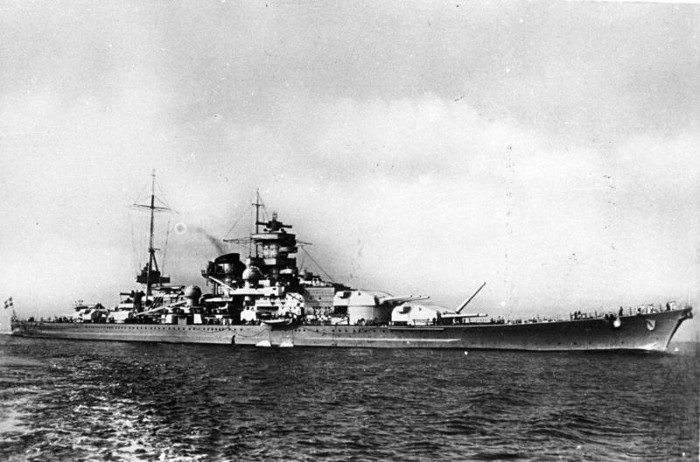 hat is known as the miracle ship of the German navy from 1936, the Scharnhorst was the second capital ship to take part in World War II. Many naval engineers consider this ship ahead of its time, however, even if this is true that is not necessarily what makes this battleship special. The gem in this battleship is the military success it has achieved together with the Gneisenau warship.
hat is known as the miracle ship of the German navy from 1936, the Scharnhorst was the second capital ship to take part in World War II. Many naval engineers consider this ship ahead of its time, however, even if this is true that is not necessarily what makes this battleship special. The gem in this battleship is the military success it has achieved together with the Gneisenau warship.
Their main job was to incapacitate any merchant ships that were going towards British lands and by incapacitate, I do mean destroy. For the early period of the Second World War, the British navy could not withstand the power that these two warships (especially the Scharnhorst) were bringing to the battlefield. This battleship is considered by many historians to be the main reason why the British warships were engineered with very thick armor (especially around the citadel of the ship).
The Scharnhorst was the first battleship in the German Navy to utilize torpedo tubes, these were mounted on the center side of the ship where they would propel torpedos with high speed over a range of 3 kilometers. Such a tactic was seen as quite obsolete as battleships are heavy therefore they are slow and it is quite easy for the enemy to anticipate the torpedoes, however, do not forget that this is not a regular battleship. Despite its heavy weight of 38,190 long tons, it had the most powerful engine created on this planet at the time which produced 159,000 horsepower.
This allowed the battleship to move at a max speed of 31 knots (36mph), therefore the torpedo tubes were a welcomed and efficient addition. What was the really scary factor of the ship was its main armament of nine 283mm SK C/34 naval guns. What is special about these heavy-caliber cannons is their reload speed of only 17 seconds whilst firing a 300-kilogram shell, imagine what kind of a dent that would do to a simple, unarmored cargo ship.

When it came down to armor, the Scharnhorst was no joke either, the main deck of the battleship was covered with 50mm thick armor whilst the belt (represented by the black line above the red section which is the citadel) was covered with 350mm thick armor. The reason for this was because the citadel not only housed the engine of the ship but also most of the ammunition which upon being hit could explode the whole ship.
Another interesting addition which was a first for any ship at the time was a
The reconnaissance plane on board of the ship, utilized an early aviation catapult as seen on modern aircraft carriers. The ship carried an Arado Ar 196 which in 1937 became the standard aircraft of the Kriegsmarine (German Navy) throughout World War II. This plane came in very handy as it could help detect enemy ships that were hiding over terrain or that were not visible due to bad weather conditions.
In early 1942 the Scharnhorst battleship joined the Bismarck-class battleships Tirpitz in Norway to interdict convoys to the Soviet Union. I know that the Scharnhorst did not compare to the performance of the Bismarck, however, it was ahead of its time and this is the main reason it dominated the seas for a good period of the Second World War. During this time the ship did not face many major challenges that would put it to a real test of performance within combat.
That was the case until 26 December 1943 when the battle of the North Cape took place. On that day the Scharnhorst had the unpleasant pleasure to fight with the HMS Duke of York battleship of the British Royal Navy. This was a brand new battleship decked out with 406mm cannons and escorted by 2 cruisers and 4 destroyers. The Scharnhorst did not stand a chance but, even so, it went down with honor, and fighting.
Avid Writer with invaluable knowledge of Humanity!
Upcoming historian with over 30 million views online.
“You make your own life.”






